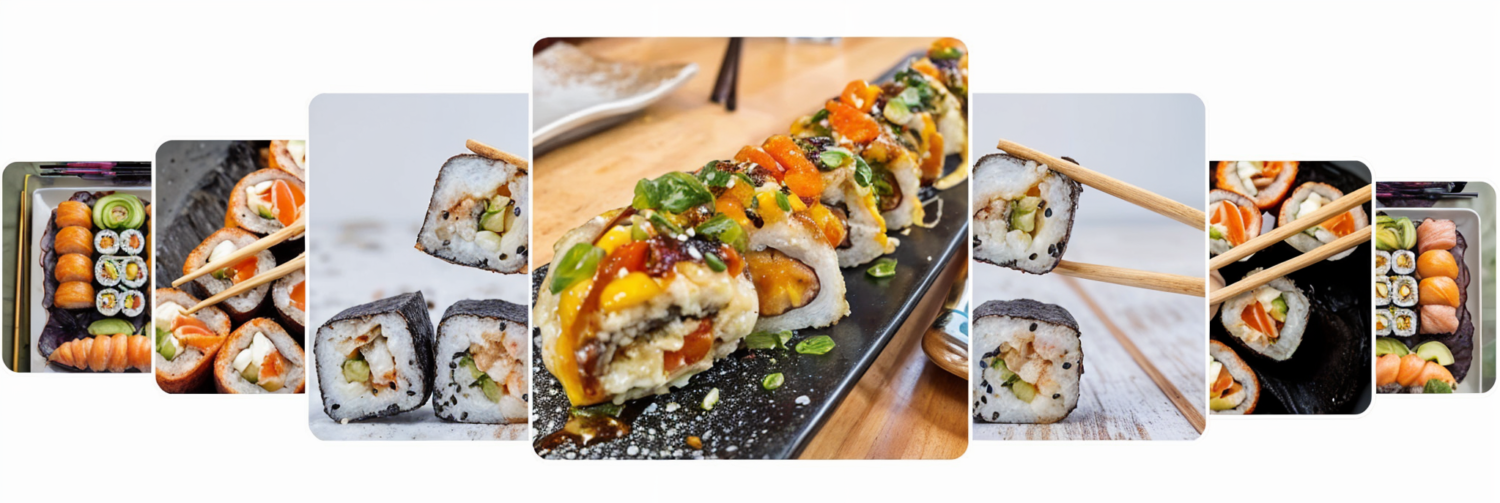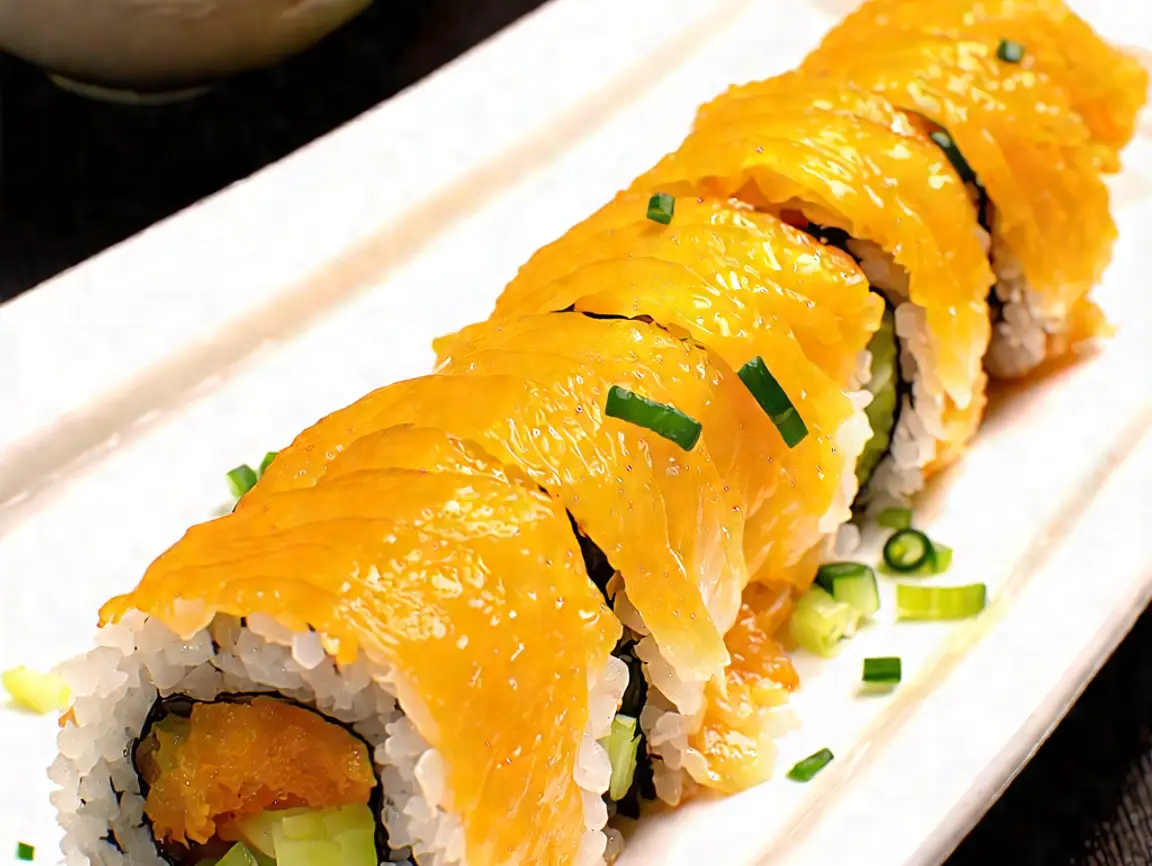The Yellowtail Scallion Roll (カリフォルニアロール) is a delicious and healthy sushi option made with yellowtail (Hamachi) and scallions (Negi). This roll offers a mild, buttery flavor, complemented by a fresh, crunchy texture. Known for its rich omega-3 fatty acids, it’s a nutritious choice for sushi lovers. In this article, we’ll explore the recipe, nutritional information, and history of the Yellowtail Scallion Roll. Learn more about sushi rolls.
Table of Contents
ToggleYellowtail scallion roll(ハマチネギ巻き)
The Yellowtail Scallion Roll (カリフォルニアロール) consists of fresh yellowtail fish (Hamachi), scallions (Negi), sushi rice, and nori (海苔). The fish is soft and buttery, while the scallions offer a slight pungency that balances the overall flavor. It is served with pickled ginger (ガリ, Gari) and soy sauce (しょうゆ, Shoyu) on the side.
Ingredients for Yellowtail Scallion Roll(ざいりょう)
The Yellowtail Scallion Roll (Hamachi Negi Maki – ハマチネギ巻き) is a delicious sushi roll. It combines the rich flavor of yellowtail fish with the subtle crunch of scallions. To prepare this sushi, you need sushi rice, fresh yellowtail (Hamachi), and nori (seaweed sheets). These ingredients give it an authentic taste and unique texture.
You can also use optional ingredients to enhance the flavor or presentation. Popular choices include sesame seeds for a nutty crunch or cucumber for added freshness. A drizzle of ponzu sauce can add a citrusy tang. If you enjoy spicy flavors, try adding a touch of wasabi or spicy mayo.
This mix of essential and optional ingredients lets you customize the Yellowtail Scallion Roll. It is a versatile and enjoyable sushi option for any occasion.

| Alternative | Hamachi Negi Maki (ハマチネギ巻き) |
|---|---|
| Course | Main course |
| Place of origin | Japan, United States |
| Region or state | East Asia, North America |
| Main ingredients | Sushi rice, yellowtail fish (hamachi), scallions, nori (seaweed) |
| Food energy (per serving) | 1 serving (2 pieces), approx. 450 kJ (108 kcal) |
History of Yellowtail Scallion Roll
The Yellowtail Scallion Roll has its origins in Japanese cuisine, specifically in the regions where yellowtail (Hamachi) is abundant. Yellowtail has been a staple in sushi for centuries, but it wasn’t until the modern sushi boom that creative combinations like the yellowtail scallion roll began to emerge.
While there is no single known inventor of the roll, it is believed that it was created in the 1980s, following the rise in popularity of sushi in Western countries. California in the United States played a significant role in this sushi revolution, where chefs started experimenting with traditional ingredients and rolls to cater to local tastes.
Nutritional Information of Yellowtail Scallion Roll (カリフォルニアロールの栄養)
- Calories: A single Yellowtail Scallion Roll contains about 200-250 calories.
- Carbs: Around 30g of carbs, primarily from sushi rice.
- Protein: Approximately 15g of protein from the yellowtail.
- Omega-3 Fatty Acids: Essential for heart health, yellowtail is a great source.
- Vitamins: Scallions are high in vitamin C and vitamin A.
Health Benefits of Yellowtail Scallion Roll
- Heart Health: The omega-3 content supports cardiovascular health.
- High Protein: Essential for muscle growth and repair.
- Low-Calorie: A great choice for those on a calorie-conscious diet.
Frequently Asked Questions (FAQ)
Is yellowtail scallion good?
Yes, yellowtail scallion rolls are delicious and highly popular among sushi lovers! The combination of tender yellowtail fish and fresh scallions offers a perfect balance of rich, buttery flavors and a refreshing, crisp texture.
What kind of fish is a yellowtail?
Yellowtail refers to the Japanese amberjack, a large, fast-swimming fish found in the Pacific Ocean. It is commonly used in Japanese cuisine, especially in sushi and sashimi, for its mild, slightly sweet flavor and firm texture.
What is yellowtail good for?
Yellowtail is rich in protein, omega-3 fatty acids, and essential vitamins like B12 and D. It’s excellent for heart health, brain function, and maintaining overall energy levels. Plus, its rich flavor makes it a favorite in many dishes, especially sushi!

